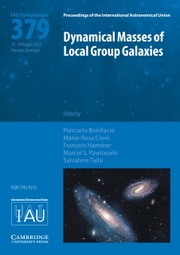No CrossRef data available.
Article contents
An Astronomers Guide to Machine Learning
Published online by Cambridge University Press: 01 August 2025
Abstract
With the volume and availability of astronomical data growing rapidly, astronomers will soon rely on the use of machine learning algorithms in their daily work. This proceeding aims to give an overview of what machine learning is and delve into the many different types of learning algorithms and examine two astronomical use cases. Machine learning has opened a world of possibilities for us astronomers working with large amounts of data, however if not careful, users can trip into common pitfalls. Here we’ll focus on solving problems related to time-series light curve data and optical imaging data mainly from the Deeper, Wider, Faster Program (DWF). Alongside the written examples, online notebooks will be provided to demonstrate these different techniques. This guide aims to help you build a small toolkit of knowledge and tools to take back with you for use on your own future machine learning projects.
Information
- Type
- Contributed Paper
- Information
- Proceedings of the International Astronomical Union , Volume 19 , Symposium S368: Machine Learning in Astronomy: Possibilities and Pitfalls , August 2023 , pp. 40 - 49
- Creative Commons
- This is an Open Access article, distributed under the terms of the Creative Commons Attribution-NonCommercial licence (http://creativecommons.org/licenses/by-nc/4.0/), which permits non-commercial re-use, distribution, and reproduction in any medium, provided the original article is properly cited. The written permission of Cambridge University Press must be obtained prior to any commercial use.
- Copyright
- © The Author(s), 2025. Published by Cambridge University Press on behalf of International Astronomical Union


